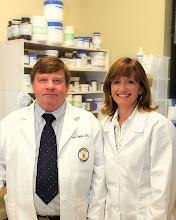Hyperpigmentation is the most common and distressing condition afflicting people in Western countries. Hyperpigmentation is defined as the darkening of skin or nails caused by an increase in melanin production, the substance in the body that is responsible for color or pigment. The major cause of hyperpigmentation is exposure to the sun, but other conditions may cause an increase in melanin production such as pregnancy and Addison's disease (decreased function of the adrenal gland). Certain drugs may cause an increase in melanin production such as antibiotics, antiarrythmics, and antimalarial medications, and others.
One example of hyperpigmentation is called melasma, also known as chloasma, which is characterized by brown patches usually occuring on the forehead, temples, and cheeks. Melasma can occur in pregnant women and in women who are taking oral contraceptives and is sometimes called the "mask of pregnancy", but it can occur in men as well. Melasma is more common and lasts longer in people with dark skin. Another example of hyperpigmentation is lentigines which are also called "liver spots" and they typically occur on the face and back of the hands. Lentigines are flat brown spots that are oval in shape. Chronic sun exposure is the major cause of solar lentigines. Middle age is typically the first time lentigines are noticed and they increase in number with age. Lentigines are an independent risk factor for melanoma even though a progression from lentigines to melanoma has not been established.
The topical treatments for hyperpigmentation consist mostly of chemicals that inhibit the enzyme tyrosinase, which forms pigment. Some of these chemicals used to treat hyperpigmentation are hydroquinone, kojic acid, vitamin C, azelaic acid, and arbutin. Hydroquinone has been under scrutiny for its mutagenic effect and its ability to darken the skin after prolonged use. It is banned in Japan and the European Union. Kojic acid was discovered by accident when scientists in Japan were fermenting malted rice to make sake and kojic acid was a by-product. Azelaic acid which is found in wheat and barley is a weak inhibitor of tyrosinase so a high concentration, such as 15%, is needed to produce lightening. Arbutin is purified from mulberry or bearberry extract and is almost chemically identical to hydroquinone with the addition of a sugar molecule. Once it comes in contact with the skin the sugar is cleaved and hydroquinone is slowly released. Arbutin takes a few weeks longer to work than hydroquinone, but it causes less irritation. Vitamin A derivatives such as retinol, alpha hydroxy acids, and beta hydroxy acids are often used in conjunction with lighteners because they increase skin cell turnover which in turn speeds the removal of pigment granules. Niacinamide is also an effective skin lightener. Its mechanism of action is unrelated to the enzyme tyrosinase. Niacinamide prohibits the transfer of melanosomes (the pigment containing organelle) to skin cells inhibiting the production of discolored cells.
All of these treatments require two to three months before results can be seen so patience is needed. Your expectations should be reasonable since these products will lighten but not erase the spots. They are most effective in light skinned people. Lighteners can make the skin more sensitive to the sun so a sunscreen is required while using skin lightening products. Sunscreens are the first defense against skin aging in general, but particularly to prevent hyperpigmentation so start using sunscreens today to protect your skin for tomorrow.
Friday, September 25, 2009
Hyperpigmentation
Labels:
age spots,
arbutin,
azelaic acid,
hydroquinone,
kojic acid,
liver spots,
melasma
Subscribe to:
Post Comments (Atom)


In addition the list of entities that reduces hyperpigmentation, newer other molecules like curcuminoids and white tetrahydrocurcuminoids have multiple protection mechanisms: preventing UV induced mutations, tyrosinase inhibition and free radical capturing anti-oxidant features. Other molecules like glabridin from Licorice (as 4% extracts) more than 40% extracts has broad spectrum anti-hyperpigmentation activity. Interestingly, ethyl p-methoxy cinnamate is a natural sunscreen present in galanga oil that can easily be formulated into creams with natural mica or silica and that gives an entirely pure natural sunscreen especially whn using kokum butter based formulations.
ReplyDelete